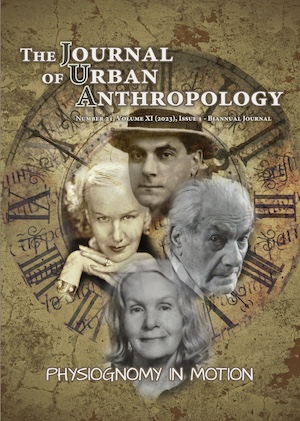Interior-Intimity-Affinity. In private residences of Belle Époque Bucharest.
Interior-Intimity-Affinity. In private residences of Belle Époque Bucharest.
Author(s): Alexandra RusuSubject(s): Social history, Cultural Anthropology / Ethnology, Culture and social structure , Social development, Social differentiation, Family and social welfare, Welfare services
Published by: EDITURA OSCAR PRINT
Keywords: material culture; sociability; lifestyle; conflicting moral; synergy;
Summary/Abstract: In anthropological research, the concept of home has received several meanings, from a simple framework for the development of various social relationships (e.g., kinship)- a way to order society - to a symbol of distinct cultural beliefs. Recent studies advance a distinction between house (or household) and home, where the house suggests the material forms, mirroring the dominant norms of society, and the home is defined by the subjective aspects that influence the formation of the individual, comprising feelings of rootedness, safety and worth.Observing this new approach, my research analyzes a complex and multifaceted cultural setting, namely the interior of the house, from three perspectives: the material culture (interior), the sociability (intimity), and the lifestyle modernization (affinity).Accompanying the phenomenon of family values exaltation and national identity affirmation, the sumptuous examples of elite residences, that set the atmosphere of Belle Époque Bucharest, were vehicles through which their owners displayed their education, values, and aspirations. Through design and rules of sociability, the ideal framework of family life, in perfect symmetry with the national project, was developed. Every stage of construction, from the exterior to the interior design, had to guarantee not only the embodiment of exquisite taste but also the physical, mental, and moral health of the citizens, the goal being the improvement of human nature, implicitly of society. As men’s work moves into public space, we witness the construction of another dimension of the private house. The house becomes a home, a place of refuge, balancing the increasing anonymity and rationality of the outside world.Furthermore, the interior space reflected a world in rapid transformation, a liminal time in which the traditional order that determined hierarchy, loyalty, and social control no longer worked but a new order was yet to be established. An atmosphere of tension, of values clashing, is established, which will culminate with the outbreak of the First World War.
Journal: THE JOURNAL OF URBAN ANTHROPOLOGY
- Issue Year: 11/2023
- Issue No: 21
- Page Range: 141-168
- Page Count: 28
- Language: Estonian
- Content File-PDF

